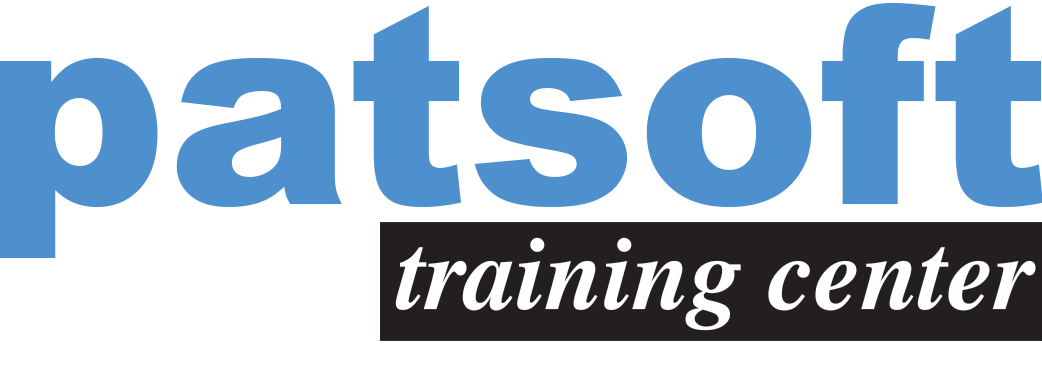
AZ-104 - Microsoft Azure Administrator
- Πληροφορική - Επαγγελματίες IT

ΠΕΡΙΓΡΑΦΗ
This course teaches IT Professionals how to manage their Azure subscriptions, secure identities, administer the infrastructure, configure virtual networking, connect Azure and on-premises sites, manage network traffic, implement storage solutions, create and scale virtual machines, implement web apps and containers, back up and share data, and monitor your solution.
ΣΕ ΠΟΙΟΥΣ ΑΠΕΥΘΥΝΕΤΑΙ
This course is for Azure Administrators. The Azure Administrator implements, manages, and monitors identity, governance, storage, compute, and virtual networks in a cloud environment. The Azure Administrator will provision, size, monitor, and adjust resources as appropriate.
COURSE PREREQUISITES
Recommended Prerequisite course:
AZ-900 Azure Fundamentals
- Successful Azure Administrators start this role with experience in virtualization, networking, identity, and storage.
- Understanding of on-premises virtualization technologies, including: VMs, virtual networking, and virtual hard disks.
- Understanding of Active Directory concepts, including users, groups, and role-based access control.
- Understanding of resilience and disaster recovery, including backup and restore operations.
ΠΕΡΙΣΣΟΤΕΡΕΣ ΠΛΗΡΟΦΟΡΙΕΣ
Course Outline
1 - Configure Azure Active Directory
- Describe Azure Active Directory benefits and features
- Describe Azure Active Directory concepts
- Compare Active Directory Domain Services to Azure Active Directory
- Select Azure Active Directory editions
- Implement Azure Active Directory join
- Implement Azure Active Directory self-service password reset
- Create user accounts
- Manage user accounts
- Create bulk user accounts
- Create group accounts
- Create administrative units
- Identify Azure regions
- Implement Azure subscriptions
- Obtain an Azure subscription
- Identify Azure subscription usage
- Implement Microsoft Cost Management
- Apply resource tagging
- Apply cost savings
- Create management groups
- Implement Azure policies
- Create Azure policies
- Create policy definitions
- Create an initiative definition
- Scope the initiative definition
- Determine compliance
- Implement role-based access control
- Create a role definition
- Create a role assignment
- Compare Azure roles to Azure Active Directory roles
- Apply role-based access control
- Review fundamental Azure RBAC roles
- Use the Azure portal
- Use Azure Cloud Shell
- Use Azure PowerShell
- Use Azure CLI
- Review Azure Resource Manager benefits
- Review Azure resource terminology
- Create resource groups
- Create Azure Resource Manager locks
- Reorganize Azure resources
- Remove resources and resource groups
- Determine resource limits
- Review Azure Resource Manager template advantages
- Explore the Azure Resource Manager template schema
- Explore the Azure Resource Manager template parameters
- Consider Bicep templates
- Review QuickStart templates
- Plan virtual networks
- Create subnets
- Create virtual networks
- Plan IP addressing
- Create public IP addressing
- Associate public IP addresses
- Allocate or assign private IP addresses
- Implement network security groups
- Determine network security group rules
- Determine network security group effective rules
- Create network security group rules
- Implement application security groups
- Identify domains and custom domains
- Verify custom domain names
- Create Azure DNS zones
- Delegate DNS domains
- Add DNS record sets
- Plan for Azure Private DNS zones
- Review Azure Private DNS zone scenarios
- Determine Azure Virtual Network peering uses
- Determine gateway transit and connectivity
- Create virtual network peering
- Extend peering with user-defined routes and service chaining
- Review system routes
- Identify user-defined routes
- Determine service endpoint uses
- Determine service endpoint services
- Identify private link uses
- Determine Azure Load Balancer uses
- Implement a public load balancer
- Implement an internal load balancer
- Determine load balancer SKUs
- Create back-end pools
- Create health probes
- Create load balancer rules
- Implement Azure Application Gateway
- Determine Azure Application Gateway routing
- Configure Azure Application Gateway components
- Implement Azure Storage
- Explore Azure Storage services
- Determine storage account types
- Determine replication strategies
- Access storage
- Secure storage endpoints
- Implement Azure Blob Storage
- Create blob containers
- Assign blob access tiers
- Add blob lifecycle management rules
- Determine blob object replication
- Upload blobs
- Determine Blob Storage pricing
- Review Azure Storage security strategies
- Create shared access signatures
- Identify URI and SAS parameters
- Determine Azure Storage encryption
- Create customer-managed keys
- Apply Azure Storage security best practices
- Compare storage for file shares and blob data
- Manage Azure Files shares
- Create file share snapshots
- Implement Azure File Sync
- Identify Azure File Sync components
- Deploy Azure File Sync
- Use Azure Storage Explorer
- Use the Azure Import/Export service
- Use the WAImportExport tool
- Use the AzCopy tool
- Review cloud services responsibilities
- Plan virtual machines
- Determine virtual machine sizing
- Determine virtual machine storage
- Create virtual machines in the Azure portal
- Connect to virtual machines
- Plan for maintenance and downtime
- Create availability sets
- Review update domains and fault domains
- Review availability zones
- Compare vertical and horizontal scaling
- Implement Azure Virtual Machine Scale Sets
- Create Virtual Machine Scale Sets
- Implement autoscale
- Configure autoscale
- Implement virtual machines extensions
- Implement Custom Script Extensions
- Implement Desired State Configuration
- Implement Azure App Service plans
- Determine Azure App Service plan pricing
- Scale up and scale out Azure App Service
- Configure Azure App Service autoscale
- Implement Azure App Service
- Create an app with App Service
- Explore continuous integration and deployment
- Create deployment slots
- Add deployment slots
- Secure your App Service app
- Create custom domain names
- Back up and restore your App Service app
- Use Azure Application Insights
- Compare containers to virtual machines
- Review Azure Container Instances
- Implement container groups
- Review the Docker platform
- Explore Azure Kubernetes Service terminology
- Explore the AKS cluster and node architecture
- Configure Azure Kubernetes Service networking
- Configure Azure Kubernetes Service storage
- Configure Azure Kubernetes Service scaling
- Configure AKS burst scaling to Azure Container Instances
- Describe Azure Backup benefits
- Implement Backup center for Azure Backup
- Configure Azure Recovery Services vault backup options
- Use the Microsoft Azure Recovery Services (MARS) agent
- Configure on-premises file and folder backups
- Explore options to protect virtual machine data
- Create virtual machine snapshots in Azure Backup
- Set up Azure Recovery Services vault backup options
- Back up your virtual machines
- Restore your virtual machines
- Implement System Center DPM and Azure Backup Server
- Compare the MARS agent and Azure Backup Server
- Implement soft delete for your virtual machines
- Implement Azure Site Recovery
- Describe Azure Monitor key capabilities
- Describe Azure Monitor components
- Define metrics and logs
- Identify monitoring data and tiers
- Describe activity log events
- Query the activity log
- Describe Azure Monitor alerts
- Manage Azure Monitor alerts
- Create alert rules
- Create action groups
- Determine Log Analytics uses
- Create a Log Analytics workspace
- Create Kusto (KQL) queries
- Structure Log Analytics queries
- Describe Azure Network Watcher features
- Review IP flow verify diagnostics
- Review next hop diagnostics
- Visualize the network topology
Πληροφορίες Εκπαιδευτή
Αναλυτικό Κόστος Σεμιναρίου
Για Δικαιούχους ΑνΑΔ
- € 1000.00
- € 800.00
- € 0.00
- € 200.00
- € 200.00
Για μη-Δικαιούχους ΑνΑΔ
- € 1000.00
- € 150.00
- € 161.50
- € 850.00
- € 1,011.50
Κοστολογικές Πληροφορίες
Στο κόστος περιλαμβάνεται και γεύμα
ΠΡΟΓΡΑΜΜΑ ΣΕΜΙΝΑΡΙΟΥ
Δευτέρα - 28 Απρ 2025
Ώρα
08:00 - 15:45
ΕΚΠΑΙΔΕΥΤΗΣ:
Άγγελος ΗλιάδηςΤοποθεσία:
Patsoft Training Center
Τετάρτη - 30 Απρ 2025
Ώρα
08:00 - 15:45
ΕΚΠΑΙΔΕΥΤΗΣ:
Άγγελος ΗλιάδηςΤοποθεσία:
Patsoft Training Center
Παρασκευή - 02 Μαΐου 2025
Ώρα
08:00 - 15:45
ΕΚΠΑΙΔΕΥΤΗΣ:
Άγγελος ΗλιάδηςΤοποθεσία:
Patsoft Training Center
Δευτέρα - 05 Μαΐου 2025
Ώρα
08:00 - 15:45
ΕΚΠΑΙΔΕΥΤΗΣ:
Άγγελος ΗλιάδηςΤοποθεσία:
Patsoft Training Center
Τετάρτη - 07 Μαΐου 2025
Ώρα
08:00 - 15:45
ΕΚΠΑΙΔΕΥΤΗΣ:
Άγγελος ΗλιάδηςΤοποθεσία:
Patsoft Training Center
Παρασκευή - 09 Μαΐου 2025
Ώρα
08:00 - 15:45
ΕΚΠΑΙΔΕΥΤΗΣ:
Άγγελος ΗλιάδηςΤοποθεσία:
Patsoft Training Center
 Ελληνικά
Ελληνικά  English
English



 Ελληνικά
Ελληνικά
 40 ώρες
(
6 μέρες
)
40 ώρες
(
6 μέρες
)









